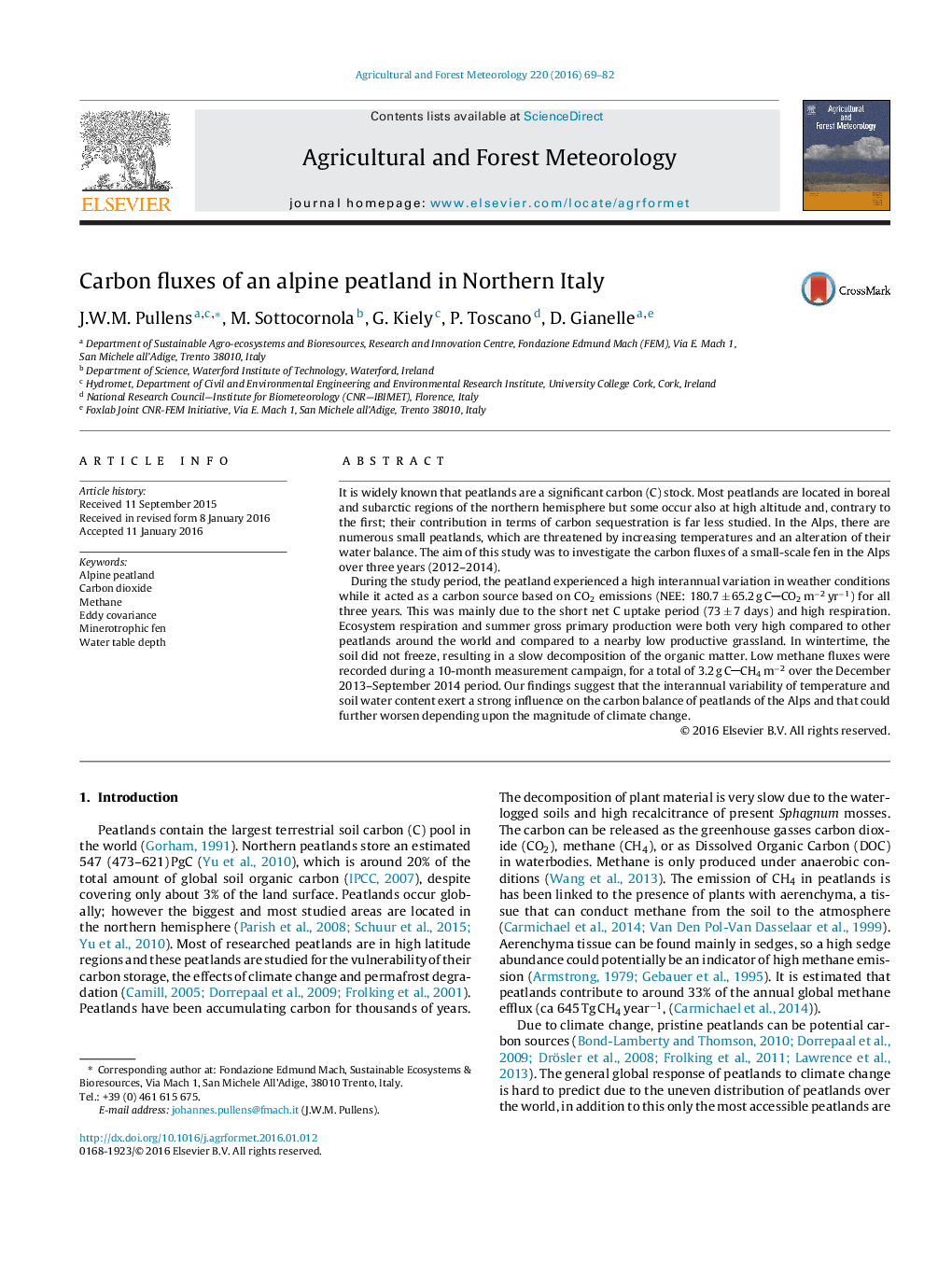| Article ID | Journal | Published Year | Pages | File Type |
|---|---|---|---|---|
| 6536992 | Agricultural and Forest Meteorology | 2016 | 14 Pages |
Abstract
During the study period, the peatland experienced a high interannual variation in weather conditions while it acted as a carbon source based on CO2 emissions (NEE: 180.7 ± 65.2 g CCO2 mâ2 yrâ1) for all three years. This was mainly due to the short net C uptake period (73 ± 7 days) and high respiration. Ecosystem respiration and summer gross primary production were both very high compared to other peatlands around the world and compared to a nearby low productive grassland. In wintertime, the soil did not freeze, resulting in a slow decomposition of the organic matter. Low methane fluxes were recorded during a 10-month measurement campaign, for a total of 3.2 g CCH4 mâ2 over the December 2013-September 2014 period. Our findings suggest that the interannual variability of temperature and soil water content exert a strong influence on the carbon balance of peatlands of the Alps and that could further worsen depending upon the magnitude of climate change.
Related Topics
Physical Sciences and Engineering
Earth and Planetary Sciences
Atmospheric Science
Authors
J.W.M. Pullens, M. Sottocornola, G. Kiely, P. Toscano, D. Gianelle,
